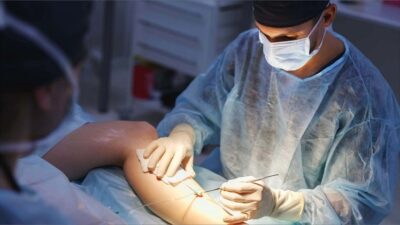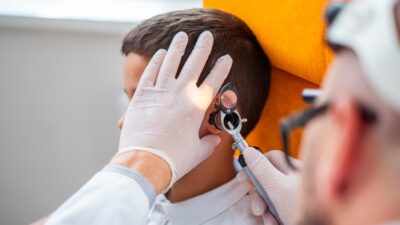Laparoscopic surgery is considered a minimally invasive surgery or MIS. During the procedure, a physician places a small fibre-optic telescope into the abdominal area by way of an incision. This incision is made in the belly button or umbilical area.
How a Laparoscope Is Used
By using a laparoscope, a surgeon can more easily view the uterus, ovaries, and fallopian tubes. Besides this area, the physician also inspects the upper abdomen and appendix. Additional instruments may be inserted through incisions in the abdomen that are created along the hairline just above the pubic bone.
For instance, the doctor may use instruments such as a suction irrigator to remove fluids and blood or rinse the tissues as needed. Some surgeons insert a slightly larger telescopic piece of equipment via the umbilical port. This permits the doctor to remove endometriosis or to cut scar tissue.
When a Laparotomy Is Advised
If endometriomas, or ovarian cysts, are discovered, they may be removed during the laparoscopy. Laparoscopy cannot treat certain abnormal growths that are larger or more difficult to remove. In this case, a laparotomy is normally recommended. Some of these growths include large ovarian cysts, ovarian cysts that may be cancerous, and fibroids that are embedded inside the uterine wall.
Recovering From a Procedure
When you are making a recovery from laparoscopic surgery, the amount of time you spend will depend on the following:
- Your level of fitness before the procedure
- The reason for the laparoscopy
- The exact type of laparoscopy surgery you had
- The result of the surgery and any possible complications
If you have a diagnostic laparoscopy, you should be able to return home on the same day. Upon awakening from the anaesthetic, the nurse will check to make sure that you are not in pain and that it is okay to go home. This part of the process normally takes about three hours.
A Short Process
If you have had a basic procedure performed as part of an operative laparoscopy, you may be able to return home the same day as well. In some instances, the patient must stay in the medical facility overnight.
Most of the anaesthetics used for a laparoscopy subside after a short amount of time. You should not experience any after-effects more than 24 hours after the procedure. During the interim, you may feel more tired than normal and your judgment may be impaired. Do not drink alcohol during this period as it can affect you adversely. Do not drive or make specific decisions when you are discharged.
Laparoscopies normally produce one to four small scars from the incisions that are made. Each scar is usually between 0.5 cm and 1 cm long. The cuts that are made are closed by glue or stitches. Also, you may experience some vaginal bleeding for about 24 to 48 hours. Discomfort in the lower abdomen may be felt as well.









Comments